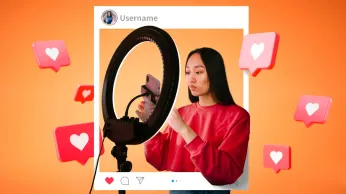Loyalty Program Incentives: A Guide to Maximizing Customer Retention
Discover how loyalty program incentives can boost customer retention, explore different types, and learn how to choose the best options for your business.g
On this page
Loyalty program incentives can turn casual customers into devoted fans, and AMC Theatres has proven this with its Stubs program. With over 50 million members in the U.S. alone, AMC has mastered the art of enticing moviegoers with tailored rewards and exclusive perks.
The program's explosive 700% growth since 2016 highlights how well-crafted incentives can attract and retain a loyal customer base, transforming the movie-going experience into a rewarding ritual. Therefore, this blog will kindly guide you through the importance of loyalty program incentives by sharing valuable case studies, best practices, and more.
What are loyalty program incentives?
Loyalty program incentives are rewards designed to encourage customers to repeatedly engage with a brand, offering perks like discounts, exclusive offers, or points that can be redeemed for products or services.
These incentives create a sense of value and connection, motivating customers to choose one brand over competitors. By providing tangible benefits, loyalty program incentives not only drive repeat business but also foster long-term customer relationships.
Whether it's earning points with every purchase or unlocking VIP status, these incentives make customers feel appreciated and special, increasing their likelihood of staying loyal and invested in the brand. If done well, a company may notice the following benefits.
- Improve engagement: Loyalty program incentives keep customers engaged by offering them rewards and perks for their continued patronage. This motivates them to keep coming back for more.
- Boost retention: Retaining existing customers is crucial for long-term success. According to Forbes, loyalty programs are powerful tools for retaining customers. When customers know they can earn rewards, they’re more likely to return to your brand instead of exploring other options.
- Low churn: Loyalty program incentives help reduce customer churn by providing a strong incentive for customers to stick with a brand. When customers feel appreciated and see tangible benefits from their loyalty, they are less likely to switch to another brand.
- Increase customer lifetime value: Loyalty program incentives increase the CLV of each customer, shared Accenture, by encouraging them to spend more over time.
- Drive organic marketing: Happy customers share their positive experiences. Amex has noticed that loyalty program incentives naturally lead to word-of-mouth marketing as satisfied customers recommend your brand to others, helping you attract new customers without additional advertising costs.
- Enhance brand reputation: A well-designed loyalty program makes the customers feel valued and rewarded for their loyalty. This leads to increased trust and loyalty from customers and a stronger market presence.
What are the different types of loyalty program incentives?
The different types of loyalty program incentives along with examples are as follows:
1. Points: Points-based incentives allow customers to earn points for every purchase they make. These points can be redeemed for rewards, discounts, or exclusive offers.
2. Cash rewards: Cash rewards are a straightforward loyalty incentive strategy that provides customers with a tangible incentive for their loyalty.
3. Cashback: Cashback incentives give customers a percentage of their purchase amount back after a transaction. This type of incentive is particularly popular in credit card programs.
4. Discounts: Discounts are a classic loyalty program incentive that provides customers with a reduction in price on future purchases.
5. Exclusive access: Exclusive access incentives give loyal customers early or special access to new products, services, or events. This creates a sense of privilege and belonging.
6. Free products: Customers love receiving something for free. Offering free products as loyalty incentives is a powerful way to delight customers and encourage repeat business.
7. Referrals: Referral bonuses reward customers for bringing new clients to the business. This type of incentive not only builds loyalty but also helps expand the customer base.
What are the best practices for loyalty program incentives?
The best practices for loyalty program incentives are as follows:
- Ease of use: Make your loyalty program simple and easy to navigate. Customers should be able to join, earn, and redeem rewards without any hassle.
- Value: Loyalty program incentives must offer real value to customers. If the rewards do not feel worthwhile, customers will quickly lose interest.
- Technology: Utilizing technology enhances the customer experience and streamlines loyalty program management. A robust digital platform allows customers to track rewards in real-time and receive personalized offers.
- Flexibility: Offer flexible rewards that cater to different customer preferences. Customers appreciate having options that suit their individual preferences.
- Tiers: Implement a tiered structure to encourage continued engagement. Higher tiers should offer more exclusive rewards, motivating customers to reach them.
- Variety: Incorporating a variety of rewards keeps the loyalty program exciting and engaging. Customers enjoy having different options to choose from.
- Promptness: Deliver rewards promptly to keep customers engaged and satisfied. Delayed rewards can lead to frustration and disengagement.
With Giift, businesses can offer real value through flexible and varied rewards tailored to individual preferences, ensuring sustained customer interest.
The platform’s robust technology enhances the user experience by enabling real-time reward tracking and personalized offers, while its tiered structure motivates customers to strive for higher levels of engagement.
Case study 1: A banking institute enhances customer engagement by 146% With LBMS by Giift
A prominent bank faced a competitive market and recognized the need to stand out by:
- Increasing customer acquisition.
- Deepening engagement across various product categories.
- Driving repeat transactions and long-term loyalty.
- Offering a seamless, integrated experience with its current platforms.
It required a loyalty solution that was flexible, secure, and scalable. The solution had to integrate smoothly with existing systems and offer a personalized, frictionless experience for its growing customer base.
Solution:
Giift’s flagship product, LBMS, allows institutions to create and manage a loyalty program across various banking products, such as credit and debit cards, internet banking, and financing options.
LBMS offers a personalized loyalty experience, enabling banks to tailor rewards to customer needs. It features a seamless redemption experience through a mobile-friendly portal that enhances security via Single Sign-On (SSO).
Customers can choose from diverse rewards, including gift vouchers, electronics, and travel options, ensuring that they find something appealing. The mobile-first design allows access to rewards anytime, increasing customer engagement.
Giift's API integration ensures that the loyalty program is incorporated smoothly across all customer touchpoints, enhancing both in-app and in-branch experiences.
Result:
The partnership with Giift produced outstanding results.
- Customer engagement increased by 146% due to personalized rewards and a varied redemption catalog.
- Transaction volume grew by 170% through the same strategies.
- Additionally, the user base expanded by 62% in just 22 months, driven by the attractiveness of the loyalty program.
Case study 2: How McDonald's transformed its trajectory with loyalty program incentives
In 2020, McDonald's faced a significant downturn in its financial performance, largely due to the impact of the COVID-19 pandemic. The company experienced a 7.7% decrease in sales, with negative guest counts reported across all segments.
The overall financial metrics were notably adverse:
- Consolidated revenues decreased by 10%.
- Systemwide sales fell by 7%.
- Operating income decreased by 19%, with an even steeper decline of 23% when excluding net strategic gains and charges.
- Operating margin dropped from 42.5% in 2019 to 38.1% in 2020, and 36.7% when adjusted for strategic items.
- Diluted earnings per share decreased by 20%, down to $6.31.
The financial struggles were compounded by a 19% decrease in free cash flow, which fell to $4.62 billion. Despite opening nearly 1,000 new restaurants, McDonald's faced a substantial operational and financial challenge, exacerbated by the pandemic’s effects on customer behavior and economic conditions.
The solution:
In response to the challenges, McDonald's introduced the MyMcDonald’s Rewards program on July 8, 2021, to drive customer engagement and stimulate sales. This loyalty program, accessible via the McDonald’s app, allows customers to earn points on every qualifying purchase, with 100 points awarded for each dollar spent.
Reward structure:
- 1500 Points: Choose from a McChicken®, Hash Browns, Vanilla Cone, or Cheeseburger.
- 3000 Points: Redeem for medium Fries, Sausage Burrito, 6-piece Chicken McNuggets®, or a large Iced Coffee.
- 4500 Points: Get large Fries, large Frappé, Filet-O-Fish®, or Sausage McMuffin® with Egg.
- 6000 Points: Enjoy a Big Mac®, Quarter Pounder® with Cheese, Happy Meal®, or Bacon, Egg & Cheese Biscuit.
- New users receive a bonus of 1500 points after their first purchase, which can be redeemed for a free menu item. The program also integrates seamlessly with McDonald's digital platforms, including self-service kiosks and delivery options, enhancing the overall customer experience.
By incentivizing repeat purchases and leveraging the app’s digital capabilities, McDonald’s aimed to boost customer retention and increase sales amid a challenging economic environment.
The impact:
The introduction of the MyMcDonald’s Rewards program had a substantial impact on McDonald’s financial performance:
- Within 2023, the reward program garnered 150 million active users
- Mcdonald’s sales increased by 40.5% in Q2 2021, reflecting a significant rebound from the previous year's declines.
- Digital channels saw an uptick, contributing to nearly 8 billion points of sale, representing a 70% increase.
- Systemwide sales rose by 48% to $28.3 billion, demonstrating strong recovery and growth.
- Consolidated revenue increased by 57% to $5.9 billion
- Operating income increased to $1.7 billion, including $98 million from strategic gains, showcasing improved profitability.
The MyMcDonald’s Rewards program drove increased customer engagement and contributed to a robust financial turnaround and growth for the company.
The strategic learnings from McDonald's and the Banking Institute:
Following are the aspects we have learned:
- Implementing loyalty programs like MyMcDonald’s Rewards encourages customers to return more frequently.
- Offering a straightforward rewards structure helps customers understand how to earn and redeem points, driving engagement.
- Offering a wide range of rewards, including gift vouchers, electronics, and travel options, caters to varied customer interests, enhancing engagement and making the loyalty program more attractive as learned from the banking institute.
- The banking institute has taught that integrating the loyalty program with digital tools, such as mobile apps, simplifies the process for customers and boosts participation.
- Tailoring rewards to popular menu items ensures that incentives are appealing and effective in motivating purchases. McDonalds and the banking establishment remains the proof of this.
- Providing bonus points upon first use can quickly attract and engage new users with the loyalty program.
Conclusion
Loyalty program incentives are a powerful tool for businesses to transform casual customers into dedicated, long-term patrons. AMC Theatres and Starbucks have both demonstrated the immense potential of well-crafted loyalty programs to drive customer engagement, increase retention, and boost sales.
With AMC's Stubs program experiencing a remarkable 700% growth since 2016 and McDonald's seeing a significant rise in sales and revenue through its Rewards program since 2021, it's clear that personalized rewards and seamless experiences can turn occasional visitors into loyal fans.
Businesses looking to enhance customer loyalty can learn valuable lessons from these successful programs, underscoring the importance of tailored incentives and the strategic use of customer data in fostering enduring customer relationships. Unlock the potential of your business with Giift's AI-powered loyalty solutions! Discover how tailored incentives and strategic use of customer data can transform your customer relationships.
- Emphasize personalized rewards.
- Utilize customer data to create effective loyalty strategies that resonate with your audience.
- Easily plug Giift into your existing systems for a hassle-free setup.
Schedule a call with our loyalty experts to join the ranks of over 3,000 enterprises worldwide that trust Giift to build scalable loyalty programs.
FAQs
1. What is a loyalty incentive?
A loyalty incentive is a reward or perk offered to customers to encourage repeat business and long-term loyalty. It can take various forms, such as points, discounts, exclusive access, or free products, depending on the brand's goals and target audience.
2. What to offer in a loyalty program?
When designing a loyalty program, you should offer rewards and incentives that provide value to customers and align with their preferences. The goal is to provide value that keeps customers coming back.
3. What are the rewards of a loyalty program?
Loyalty program rewards are the benefits customers receive for engaging with a brand and participating in the program. These rewards can include points, discounts, free products, exclusive access, and experiential perks, among others, depending on the program structure and the brand's objectives. These rewards motivate customers to stay loyal to your brand.
4. What are loyalty program perks?
Loyalty program perks are additional benefits offered to customers beyond the standard rewards. These perks make customers feel valued and appreciated.
5. How do loyalty incentives increase customer retention?
Loyalty incentives encourage customers to keep buying from you, as they receive benefits for their continued support. When customers feel appreciated and rewarded for their loyalty, they are less likely to switch to competitors. This builds a strong relationship.
6. What is the difference between loyalty incentives and rewards?
Loyalty incentives are the motivators that encourage customers to engage with a brand and participate in the loyalty program. Rewards are the actual benefits customers receive for their loyalty, such as points, discounts, or exclusive experiences.
7. How can I measure the success of my loyalty incentive program?
You can measure the success of your loyalty incentive program by tracking program enrollment, customer engagement, redemption rates, customer retention, and incremental sales. Additionally, gather customer feedback to gauge their satisfaction with the program and identify areas for improvement.
8. Can small businesses benefit from loyalty and incentive programs?
Yes, small businesses can greatly benefit from loyalty and incentive programs by increasing customer retention and building a strong customer base. By offering rewards and perks, small businesses can differentiate themselves from competitors, increase customer retention, and foster stronger relationships with their customer base.









